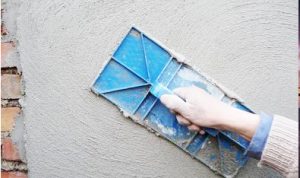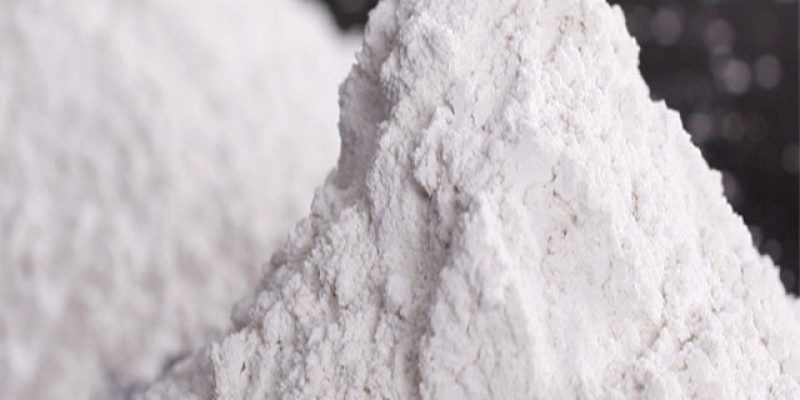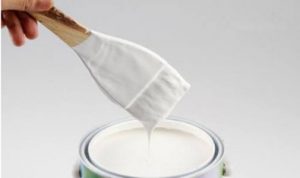
DRY MORTAR
CP series thickening and water retension agent used in dry mixing mortar is made from high grade natural bentonite( the main content is montmorillonite)
Here our theme is to share about raw materials for making paint. In particular, organoclay rheological additive use in paint making raw materials, as an important raw material in the whole paint making formula, how to help users solve the stability of the whole formula and more effectively control the cost of the whole raw material.
In response to the fluctuating global demand for paint and coatings, the prices of raw materials used in the production of paint are rising. Pigments, organoclay , solvents, resins, and various additives are some of the most commonly used raw materials in the industry.
The main raw materials for making paint in Camp Shinning is organoclay bentonite and matting powder. These two products have been export for over 20 years in the world.

The following are some of the factors that have contributed to the increase in the price of these ingredients:
Organoclay bentonite is the most basic thixotropic agent used in paint industry,as a raw materials for making paint. Organophilic clay accounts for about 4 ~ 5% of the total demand for materials.
There are many types of organoclays bentonite, the most important of which include solvent organoclay bentonite and waterborne organoclay bentonite thickening agent.
Both of them are widely used in coatings,paints, inks,grease and oil drilling mud.
The only difference is solvent type organophilic bentonite clay is mainly used in the production of oil-based coatings and waterborne bentonite is mainly used in the production of water-based coatings.
For example, water based emulsion paint, raw materials for making paint etc.
Matting agent powder is another very important additive used in the coating industry. It is also called a matting additive, accounting for about 2% of the total use. Matting powder is widely welcomed in the international market because of its excellent matting ability, which makes the coating the best matte state raw materials for making paint.
In the past 20 years, Camp Shinning has exported high-quality matting powder to many countries all over the world, including Asia, America, Africa, Europe, Oceania, and so on.
Therefore, raw materials for making paint , if you have a great demand for matting powder, or have a great demand for organoclay bentonite, or face specific use confusion in the process of your application, please contact us, and our technical department will share the technical guidance in application with you unreservedly.
Titanium dioxide, an essential pigment used in the paint industry, accounts for approximately 60% of the total demand for the material.
There are two types of titanium dioxide: anatase and rutile, and both are widely used in the production of paints. Anatase is the more common of the two types. With increased domestic production, this disparity will be closed more quickly.
Overall, raw materials for making paint ,this will increase the use of TiO2 in various sectors, including the interior and exterior construction industries.
When you choose to use titanium dioxide, please also choose Camp Shinning’s organoclay bentonite, which will make your whole formula have very stable thixotropy and rheological properties.
Acrylic resins are used in the production of enamel paints, as a raw material for making paint.
Additionally, resins and acrylics are commonly used in their construction. Some acrylics, on the other hand, are made up of a combination of both of these types of materials.
The oxides of white, blue, and green pigments are also used as primary pigments in the production of paint. Minerals such as calcium carbonate, mica, and barytes are used as extenders in the process.
Other raw materials used in the production of paints, in addition to pigments, include wax, talc, and epoxy resins, among other things.
To produce high-quality paints, raw materials for making paint, it is critical to use the proper proportions of these ingredients in the formulation.
Many pigment manufacturers and suppliers told Camp Shinning that when purchasing raw materials, the organic bentonite obtained from Camp Shinning has greatly helped their pigment anti settlement performance, and the sagging performance is also extremely outstanding in the process of use.
Therefore, the use of organic bentonite rheology modifier has greatly stabilized the quality of pigment products.
Therefore, if you choose raw materials, please choose Camp Shinning’s organoclay bentonite at the same time, This will effectively help you solve the needs of anti settlement and anti sagging performance.
The use of pigments and dyes is critical in the production of paint. They are responsible for the color of the final product.
Additives are the other ingredients that go into the production of pigments. They give the paints a variety of properties in addition to improving their spreadability and adhesion. In addition, they are used to improve the bonding of the paint to the surface it is applied to.
Because of the different types of binder that they use, the pigments have a variety of different colors. The type of binder used in the paint is what determines how durable and resistant the paint is.
Paints are primarily composed of pigments, which are the primary component. The best-performing paints are transparent, and pigments are required to ensure that a room is aesthetically pleasing.
They are an essential ingredient in the creation of home decor and decorative products. As little as a single molecule can be used in the creation of some of these pigments.
However, a pigment is only one-half of the solution. Chromas are chemical compounds that can be used to create colors in paintings, and paint colors can be used to create colors in liquids.
In any case, Camp Shinning can assure you that after using Camp Shinning’s organoclay bentonite, all pigments can achieve relative storage stability in the formula, because the basic anti-settlement performance can play a great role in the storage process.
The ingredients used in the production of paints vary greatly depending on the region, local regulations, and the resources available to the manufacturer. Some ingredients are common to all paints, while others require a variety of additives to achieve the properties that are desired.
There are numerous colors and finishes available in paint, as well as a variety of different colors and finishes. The following are some of the most frequently encountered ingredients in the painting industry. These materials are required for the production of both decorative and protective coatings.
In addition to being important in the production of a painting, they are also important for other reasons.
Colors and dyes are the most important components of a paint formulation. They have a significant impact on the final appearance of paint.
The pigments used in a painting are critical to the painting’s overall color. Furthermore, the dyes used in the paints are critical to the long-term durability of the product. However, the value of a high-quality pigment is equal to the value of how it is applied.
It is the foundation of the organization’s appeal. If you want a high-quality finish, pigments and organoclay are critical components of your process.Raw materials for making paint, you can make more demands on us.
In the production of paint, a great deal of effort and time are expended. Organoclay, matting agent additive, Pigments, which are finely ground solids that give paint its color and consistency, are the primary raw materials used in the production of paint.
The solvents are used to combine the ingredients and ensure that they are thoroughly mixed. In addition, the ingredients contain a variety of additives that aid in the drying and preservation of their shape.
Water, acrylic resin, and acetone are just a few of the different types of solvents available.
Over the course of two centuries, the composition of paint has undergone a significant transformation. Synthetic pigments and stabilizers became increasingly popular during the twentieth century.
There have been several new types of polymers developed, including styrene-butadiene and alkyd resins, among others. To grind pigment in the 1930s, stone mills were used in conjunction with a roller mill.
Sand mills have largely taken the place of steel balls in modern times. In addition, high-speed dispersion mixers are used.
Modern paint is made from a wide range of raw materials, including pigments. Resins, pigments, and organoclay bentonite additives are the three primary raw materials used in the manufacture of paint.
The pigments are responsible for the color, while the solvents are responsible for preventing drying or separation. The majority of a commercial paint is processed using a high-speed dispersion tank.
The various raw materials for making paint are blended together using a circular blade and a toothed blade in this agitator.

CP series thickening and water retension agent used in dry mixing mortar is made from high grade natural bentonite( the main content is montmorillonite)

Our CP series water-borne rheological additive is a kind of natural silicate which main ingredient is hydrophilic and high purified montmorillonite.For its good properties of thixotropy and perfect thickening ability,it can be widely applied to water based coatings,emulsion paint,toothpaste,construction mortar,cosmetic,putty etc.Some grades can also be used to replace HEC,CMC and reduce the cost.

Camp Shinning organophilic clay is a wet process improved viscosifier gelling additive.Organophilic bentonite as a thickening agent in suspension and oilfield chemicals,it could maintains suspension over a wide temperature range in the base oil of diesel oil, mineral oil based invert fluids and synthetic oil.
Email: [email protected] Wechat/Whatsapp: +86-13185071071
Tag: paint making raw materials,Organoclay, Organophilic clay,rheology modifier ,raw materials for making paint
